Great Source for SaaS & Facebook compared & analyze for the future of Software as a Service. Good to read 😉
Why the Next Generation of SaaS Will Look Like Facebook

What’s the most useful product that you use every day?
For most people, the answer isn’t anything you’d usually think of as a SaaS tool, like Slack, Gmail, or even Microsoft Excel. It’s Facebook.
Think of all the things you can do with Facebook:
Message your friends:

Make video calls:
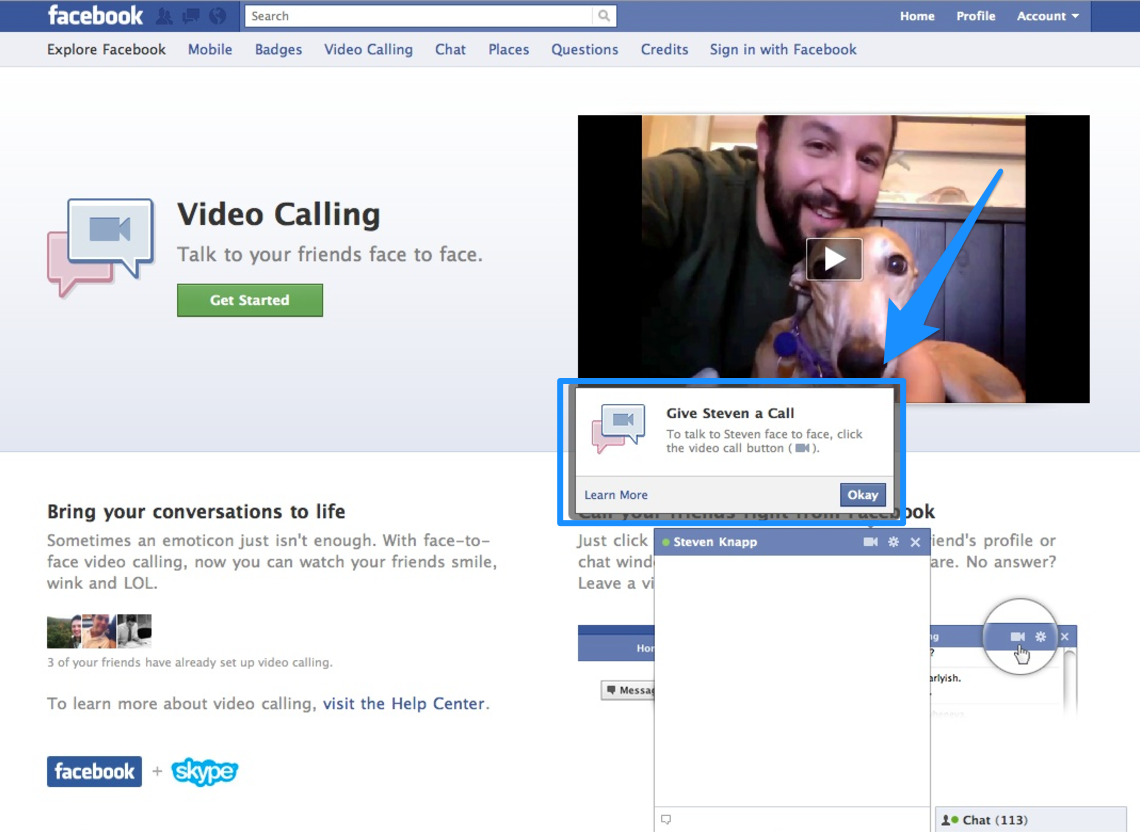
Read the news:
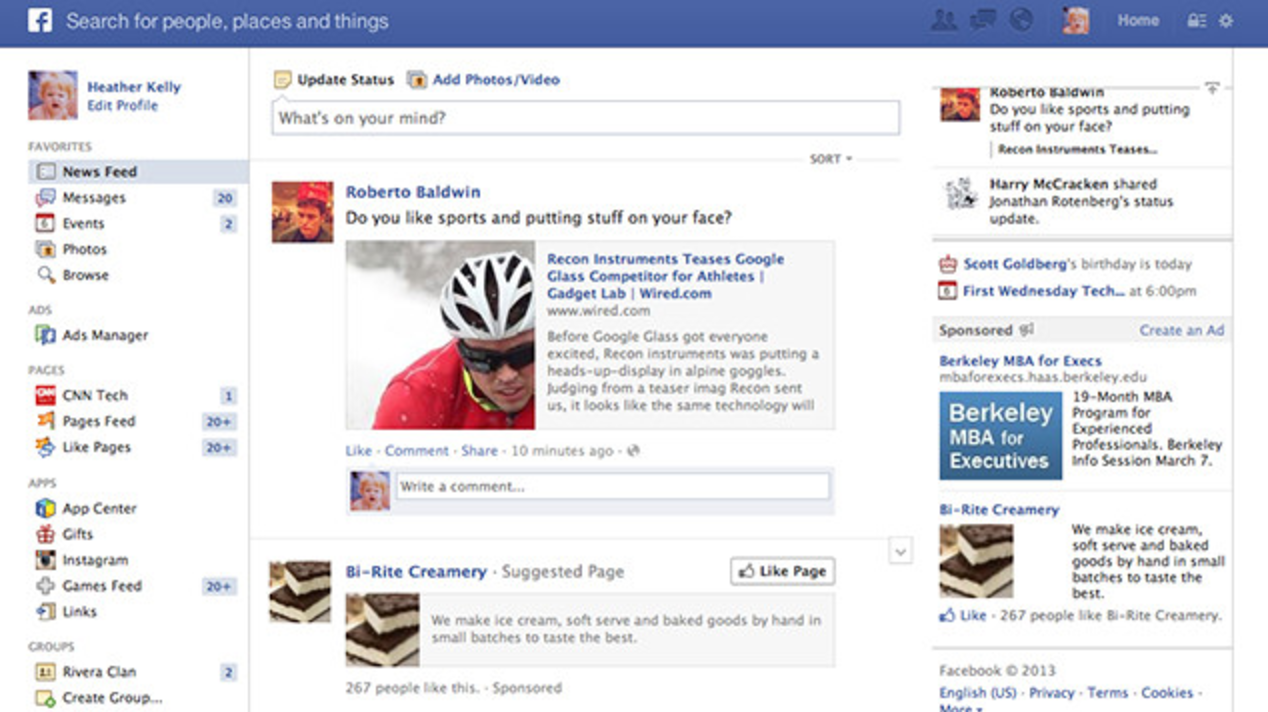
Plan events:
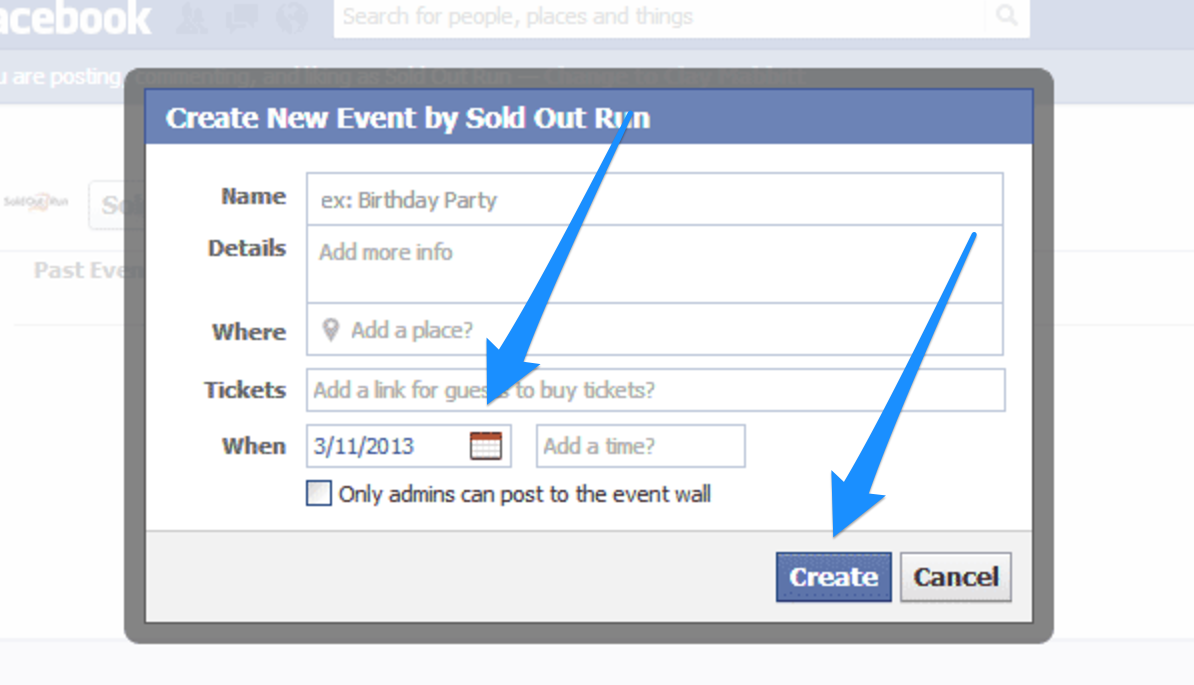
Share Photos and Videos:
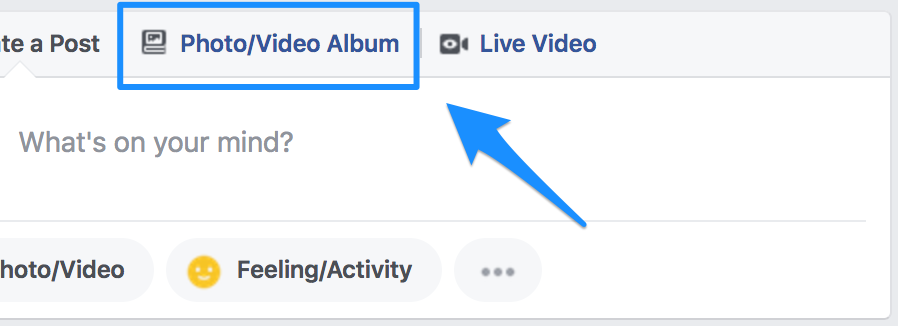
Facebook is so embedded in our day-to-day lives that it’s easy to forget how much we actually rely on it. Even though users are surrounded by a million other products, people can’t get enough of it. Facebook is doing exactly what SaaS companies need to do.
From on-premise to SaaS
SaaS simply stands for “Software as a Service.” Facebook is a consumer network product, not technically SaaS, but there’s no other product that provides as many services as Facebook does. What really makes Facebook so successful is how it drives usage within its services. SaaS companies need to take note because usage is important for SaaS survival now more than ever.
Here’s why: back in the day, business software was sold on-premise. It had to be physically installed onto a company’s computers and network. Software vendors would sell a big company a license, and the company would pay someone like Accenture or CSC to customize, deploy, and maintain that software. Vendors didn’t really care about how much people were actually using the software. They just wanted to sell more licenses.
In 1999, Salesforce co-founder Marc Benioff introduced a new model:
“Rather than selling multimillion-dollar CD-ROM software packages that took six to eighteen months for companies to install and required hefty investments in hardware and networking, we would sell Software-as-a-Service through a model known as cloud computing. Companies could pay per-user, per-month fees for the services they used, and those services would be delivered to them immediately via the Internet, in the cloud.“
Subscription-based software was delivered through a web browser rather than a company’s internal data center. It gave software developers instant, 24/7 access to their customers. Suddenly, it wasn’t a CIO or systems integrator responsible for making users happy. It was the software vendor.
This new cloud delivery model meant that SaaS software had to constantly prove value to individual users. SaaS companies pay high upfront fees to acquire customers (CAC) in the hopes that customers will continue to subscribe and pay for that software each month. It was an 180-degree turn from selling on-premise installations to enterprise customers. Now companies didn’t have to convince someone to buy something. They had to convince them to keep using it.
Facebook is the new model for SaaS
Now take Facebook. Facebook provides a service continually over the cloud. Because Facebook monetizes based on ads, its primary goal is to make sure people keep using it. Rather than selling a big contract to a CIO, Facebook sells its service by the millisecond to over 1.28 billion people at a time.
The only thing that Facebook cares about is driving usage and engagement:
“Our top priority is to build useful and engaging products that enable people to connect and share through mobile devices and personal computers.” – From the overview section of Facebook’s SEC filing
The more of your attention Facebook has, the more money they can make surfacing advertisements to you. To Facebook, attention is valuable because more attention means more opportunity for growth and expansion. This is a lesson that “bottoms-up” SaaS companies like Dropbox and Slack have taken to heart. The more time end-users spend inside the products, the more these companies can add accounts and upsell their customers.
Facebook needs user’s attention in order to grow and have a future, so they look for ways to expand usage in every direction. There are three simple ways that Facebook increases usage and growth of their product—and every SaaS company would benefit from approaching the usage and growth of their products similarly:
Facebook measures usage so they can optimize for it in the existing product
Facebook builds new products to drive more usage
Facebook integrates with other apps so that even when people aren’t using Facebook, they’re still using Facebook
Let’s talk in depth about each of the ways in which Facebook grows usage. Then we’ll show you how the same techniques Facebook uses apply to SaaS at large.
Measure usage to optimize within the existing product
You can’t get people to use your product more if you don’t understand how they already use it. Facebook is an example of a company that focuses obsessively on how they can increase usage.
The key is to identify what people are doing and want to do with the product. Facebook can’t just focus on MAUs and DAUs because those don’t explain what people really do when they use the product. Facebook hones in on the quality of usage—what people are trying to accomplish and whether they can accomplish it.
Facebook’s famous 7 friends in 10 days metric is a great example of this. Early on, Facebook discovered that users who made 7 friends in 10 days were much more likely to stick around. Once they had set this target, they could throw everything they had at helping new users get to the 7 friends mark.
Even today, Facebook’s constantly prompting you to add new friends because that’s where the value of the network is.
As soon as you create a Facebook account, a prompt to add friends shows up at the top of your News Feed:
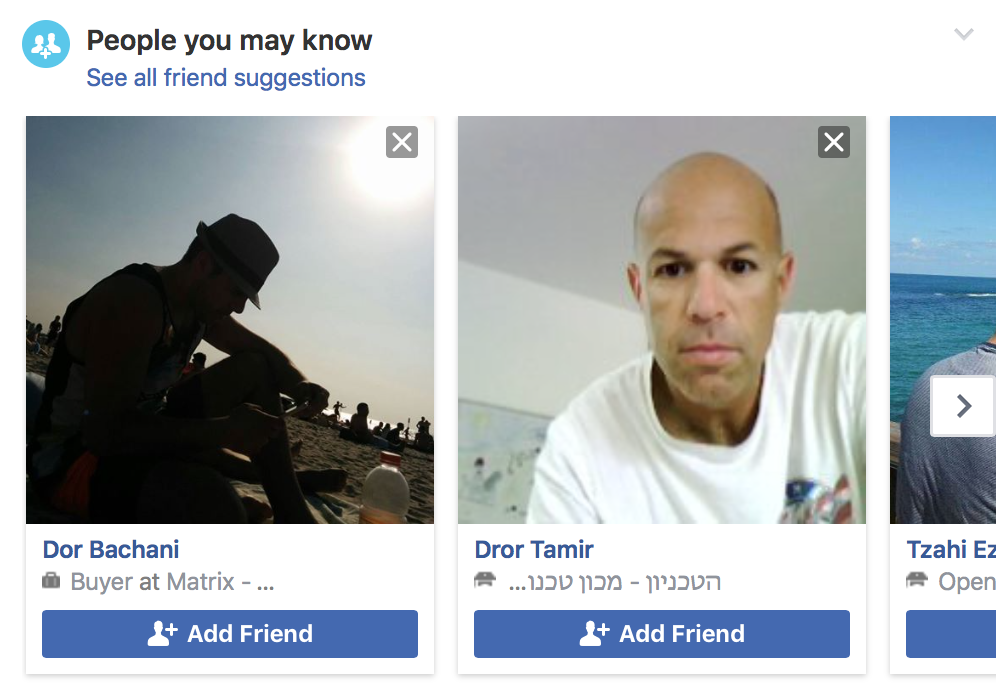
This is a sidebar that prompts you to add people you may know as friends while you’re looking at other pages:
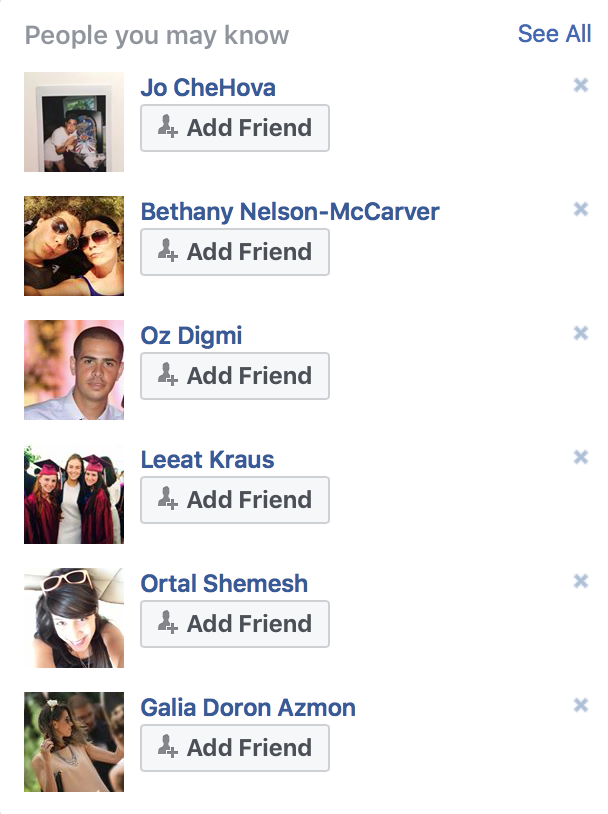
Facebook encourages you to add friends in order to get the full value of all of its features, like the News Feed:

And Facebook is still at it. In 2017, Facebook rolled out a “Discover People” feature to prompt users to update their profile and connect with people attending the same events as other users who weren’t already their Facebook friends:

SOURCE
Facebook was and still is playing the long game to continually drive more and more usage in their product. Optimizing for friends quickly and easily gave users more reasons to keep coming back. Chamath Palihapitiya, head of Facebook’s first growth team, said, “It takes discipline to not optimize for the thing that gives you the shortest and most immediate ROI.” Facebook knew early on that usage would determine whether they lived or died, so driving long-term usage around a user’s main goal was the ultimate priority.
How Trello makes it easy to add more users
Just like Facebook, Trello drives usage by understanding what users do and helping them do more of it. Since Trello’s core value is in helping people collaborate on projects, Trello has to quickly help people accomplish this and see its usefulness.
So Trello makes it incredibly easy to add more users. Just like Facebook realized that helping people add more friends would quickly show the value a social network, Trello realized that helping people add more collaborators would quickly show the value of a project collaboration tool.
Trello helps users add people they know as collaborators by letting them search by name or email address. Users can easily add whoever they want without having to know a user name, share a code, or exchange a link. They don’t even have to know if the other person uses Trello—they can just search for them and check:
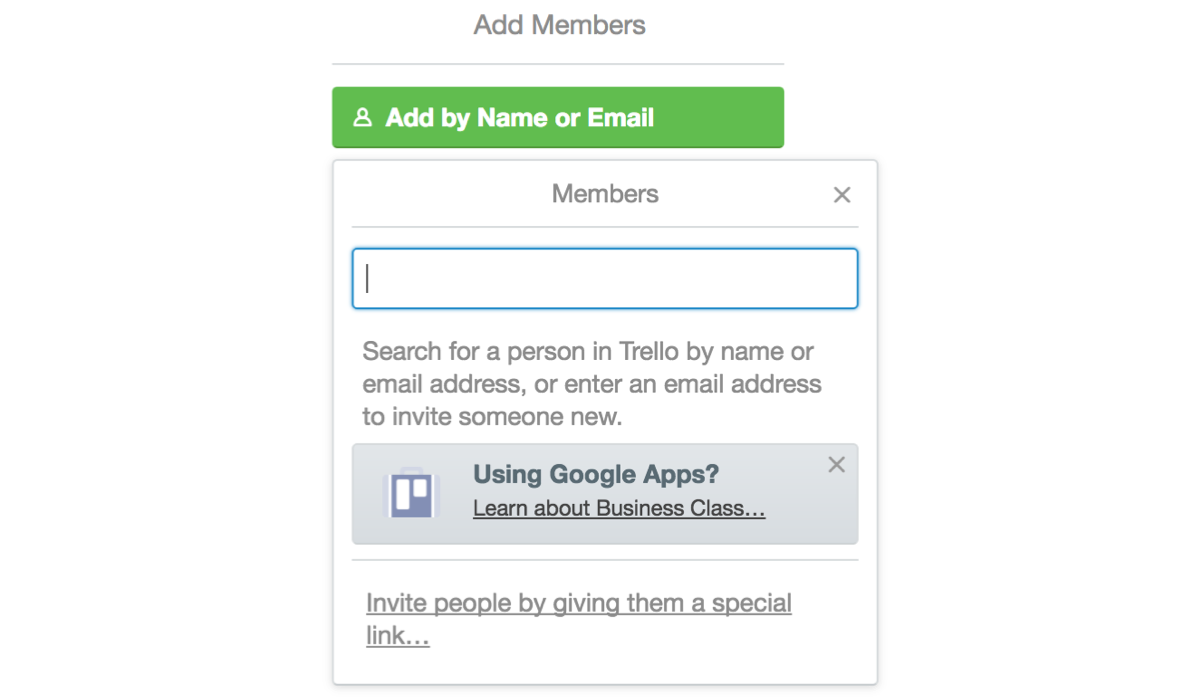
Every single person who has ever signed up for Trello can easily be added as a member to a board:

This makes it really frictionless for users to pull in lots of collaborators and share projects with others—Trello’s core value. Making this easier and faster for people helps them quickly understand how useful the product is. It also encourages more people to get involved with more projects, which drives deeper usage from everyone.
How Slack drives usage
Another household name in SaaS also drove their growth by obsessing over usage. Slack hones in on the one core thing that users do with Slack—sending messages—and works to reduce friction around that.
Slack saw that teams that sent over 2,000 messages were likely to see Slack’s value and continue using—regardless of any other factor, 93% of teams that sent over 2,000 messages are still using Slack today. So to increase usage, they worked to make messaging easier. Co-founder Stewart Butterfield encouraged the team to do this by thinking about how people were actually using the product:
“Putting yourself in the mind of someone who is coming to Slack for the first time—especially a real someone, who is being made to try this thing by their boss, who is already a bit hangry because they didn’t have time for breakfast, and who is anxious about finishing off a project before they take off for the long weekend… Look at [Slack] hard, and find the things that do not work. Be harsh, in the interest of being excellent.”
Slack has improved their product to reduce friction in messaging and drive usage. For example, they unfurl a link posted in Slack so a user can quickly see a snippet of text. You don’t have to leave the app to understand the link, and you can easily come back to it later.

Tweaks like this have helped Slack grow because they’ve made it so easy for a user to do exactly what they want to do in Slack—send messages.
Facebook, Trello, and Slack are driving usage by understanding what real users do and helping them do that faster and more easily. Here’s a breakdown of how SaaS companies can do this within their own products:
Set goals around metrics like Facebook’s “7 friends in 10 days,” Slack’s “2,000 messages sent,” or Dropbox’s “1 file uploaded.” Boiling down growth efforts to a metric like this forces your team to identify what drives usage the most and gives the team a concrete number to work towards.
Make features intuitive enough to encourage use. According to Raymond Loewy, the most successful new product features are easy for people to use right away. For example, when Facebook introduced “On This Day” memories, it encouraged the user to do something new with Facebook, but still used the same tagging and sharing functions that users were already familiar with.
Find and dismantle roadblocks to engagement. Talk with customers or early-access beta testers to find out where customers’ pain points are in using your product. Listen for complaints like, “I can’t figure out how to…” or “I wish it were easier to…” Dismantling these roadblocks will help customers better understand how to use your product and will make it easier for them to quickly see the product’s value.
Driving usage within your current product is all about identifying what is most helpful and important for users when using your product.
Add more products to drive usage
Driving usage isn’t just about getting people to keep using the product you already have. It also means looking out for new opportunities on the horizon. You need to constantly experiment and build out new products that will help your users do more and win more of their usage.
Facebook’s obsession with their own product’s death keeps them constantly experimenting and anticipating what users will want next.
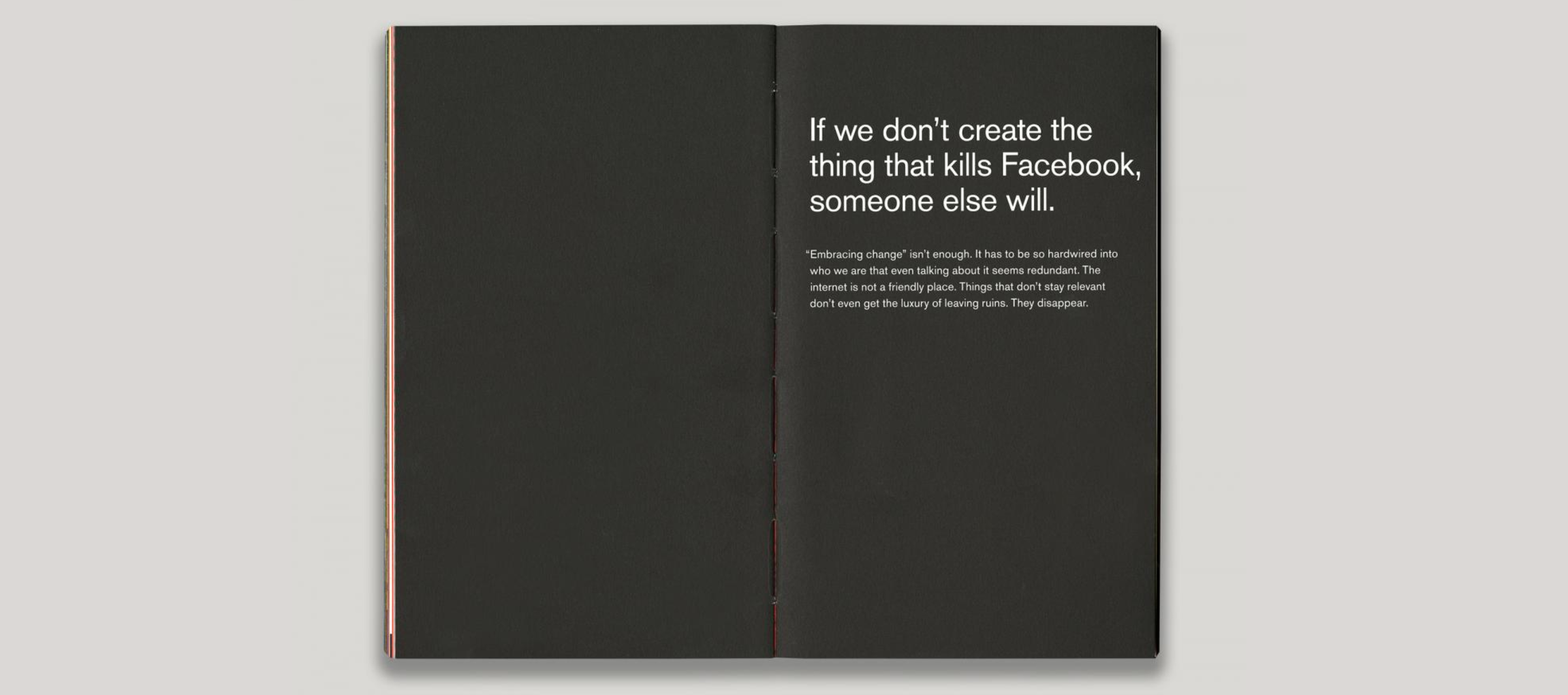
A PAGE FROM THE EMPLOYEE HANDBOOK THAT EVERY NEW TEAM MEMBER GETS PUSHES THE TEAM TO CONSTANTLY BE THINKING AHEAD.
As a result, Facebook constantly innovates, and a lot of times it fails.
Facebook released Poke as a standalone app in 2012 to try to steal usage back from Snapchat. It was a huge flop and Facebook removed it from the App Store:
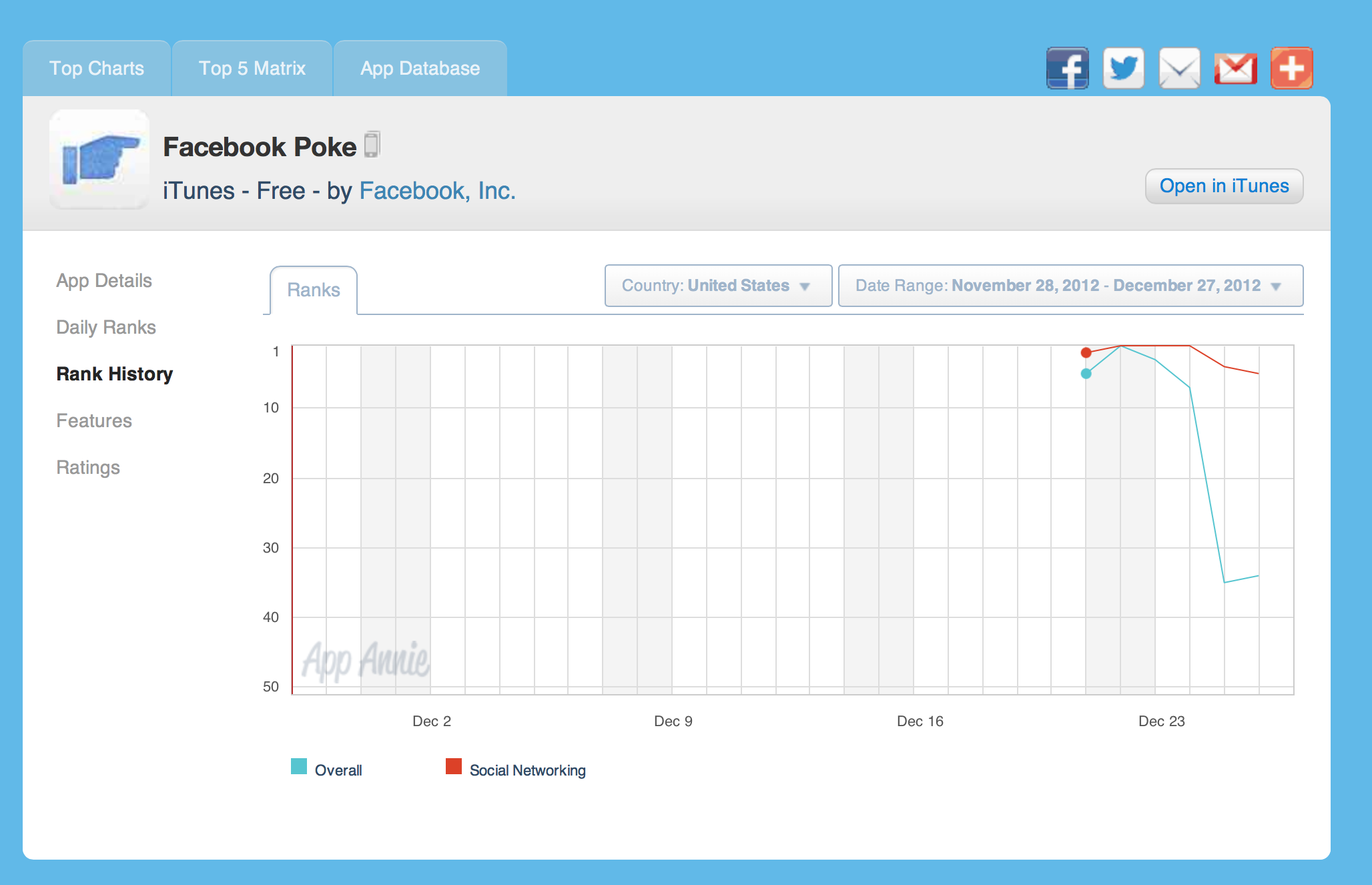
Facebook Slingshot was another attempt to drive usage with a disappearing photo messages app. It was released in 2014 and removed from the app store in 2015:
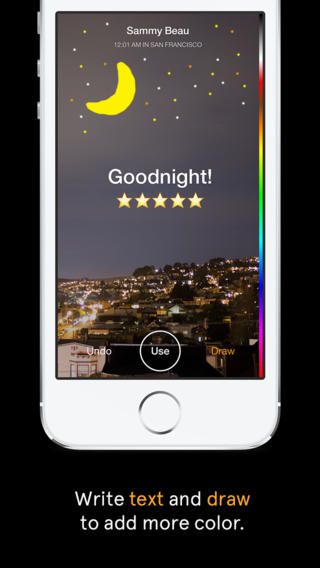
Facebook created Quick Updates in 2016, a feature that would add Snapchat-like Stories to a dedicated part of the Facebook app. It tested the new feature on a select group of users but never officially launched:
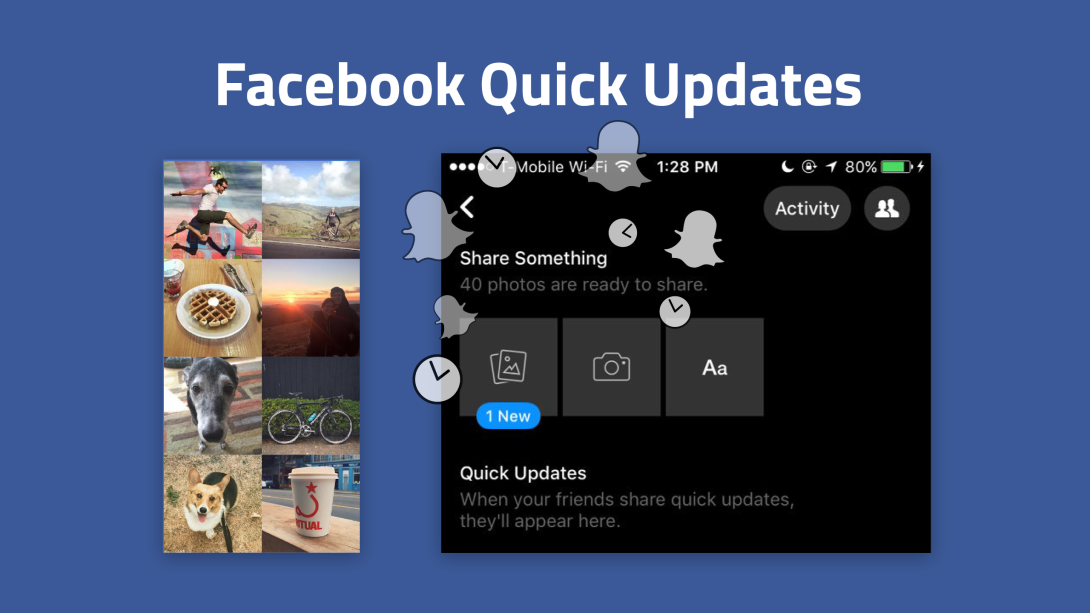
All of this generated buzz that Facebook was failing to innovate. It led commentators like Jason Calacanis to wonder, “Is Facebook’s app platform, clearly its biggest innovation to date, a bust?”
But these constant iterations brought Facebook somewhere new. They iterated on Snapchat’s Stories feature inside Facebook and Instagram, and eventually reached something new: Facebook Live. This one was a home run. Now companies, media, and even celebrities are all using Facebook’s live stories more and more.
Facebook has huge hits because it fails a lot, too. They’re just focused on continuing to make new things that people will care about, because this is how they’ll capture even more usage.
Dropbox built a new product to keep usage high
SaaS companies can drive usage by staying one step ahead of their current product. They need to think about what else users will want and what else users will care about.
This is what Dropbox did with Dropbox Paper. Dropbox used to just be a file sharing tool. But today, there are so many ways to share files. If Dropbox didn’t think about how people would want to use their product beyond their original product, they would run out of ways to drive usage and they’d be dead in the water.
So Dropbox rebranded from a file sharing tool to a team collaboration tool “to simplify the way people work together.” Along with the rebranding, Dropbox launched Dropbox Paper in 2015 as “a new type of doc designed for creative work.”
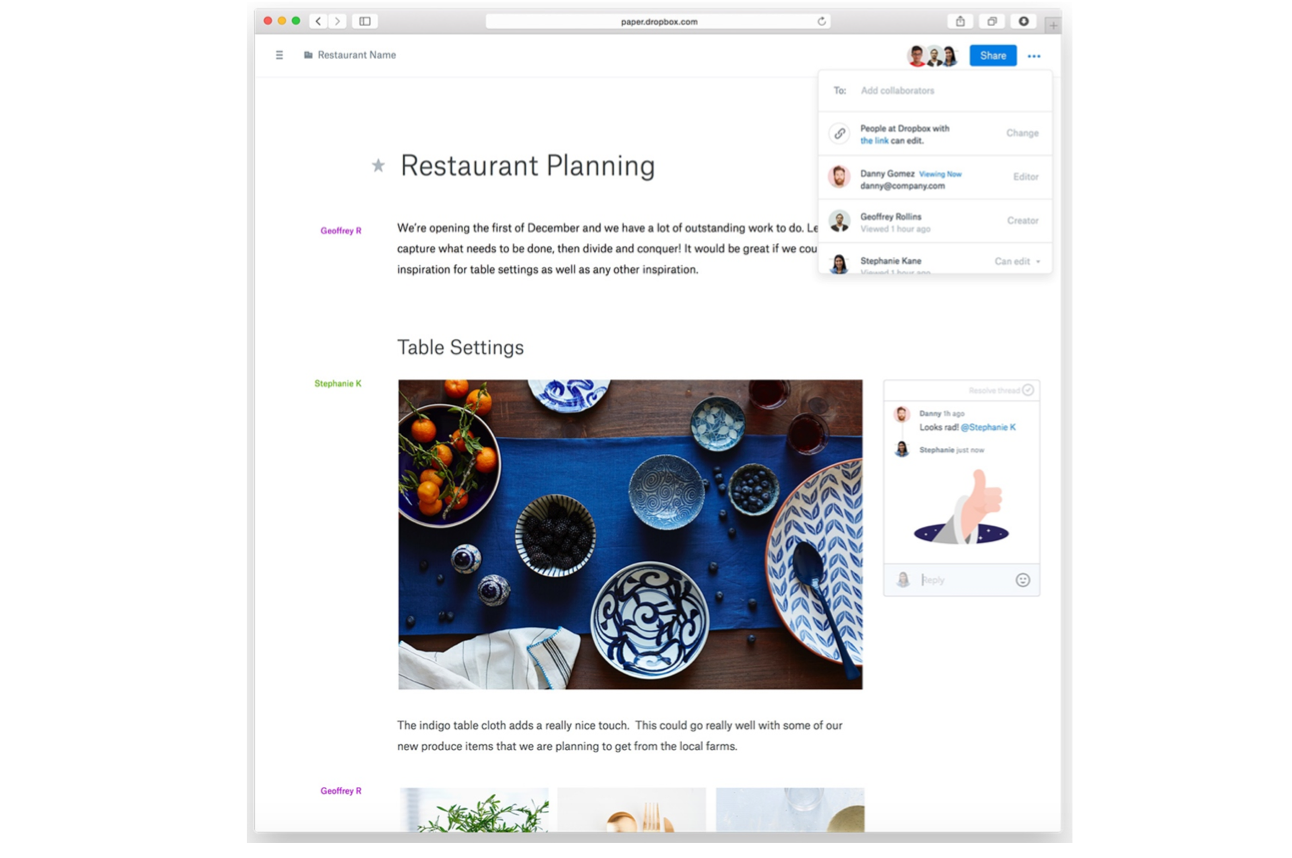
Instead of just using Dropbox to store documents and files, people can now use it to create documents and files. Paper drives more usage because it offers more options for simplifying collaborative work beyond file sharing.
Dropbox is building out product and driving more usage because that’s what it takes to survive. It’s all too easy to die because you’re not thinking ahead, like Des Traynor of Intercom explains:
“It is the nature of our industry, it is the nature of technology, that every product dies… if you don’t believe me on that, page me, or fax me, or write me up something on your typewriter. They were all epic businesses once upon a time, but they are no more.”
If you’re only thinking about what users want today, you’re already cooked. A successful SaaS company will always think about how to drive more usage by considering what users will want tomorrow. This is how SaaS companies can anticipate customers’ wants and experiment with new products:
Understand your competition and why your customers would want to use those products. Read forums online and understand how people talk about competitors’ products. This will give you insight into what customers want and where the direction of the field is moving. These are opportunities to expand out and experiment with new products and new types of usage.
Imagine what users could accomplish that would augment their main goal when using your product. This is how you’ll think ahead of what your user wants, instead of just building what they ask for. For example, Amazon’s recent release of “Your Ideas” List anticipates what users might want to accomplish while shopping—collecting and organizing items. This means Amazon could drive usage beyond commerce to start becoming a workflow-like tool for shoppers.
Prioritize features by “highest impact and lowest predictability.” Tomer London at Gusto says that when building and improving a product, the best features are ones that improve user experience the most and are the least expected. Identify the most impactful features by understanding what customers are trying to accomplish and brainstorming ways they could do it easier and better. Find the least expected improvements by learning about the competitive landscape so you’re not steps behind other products.
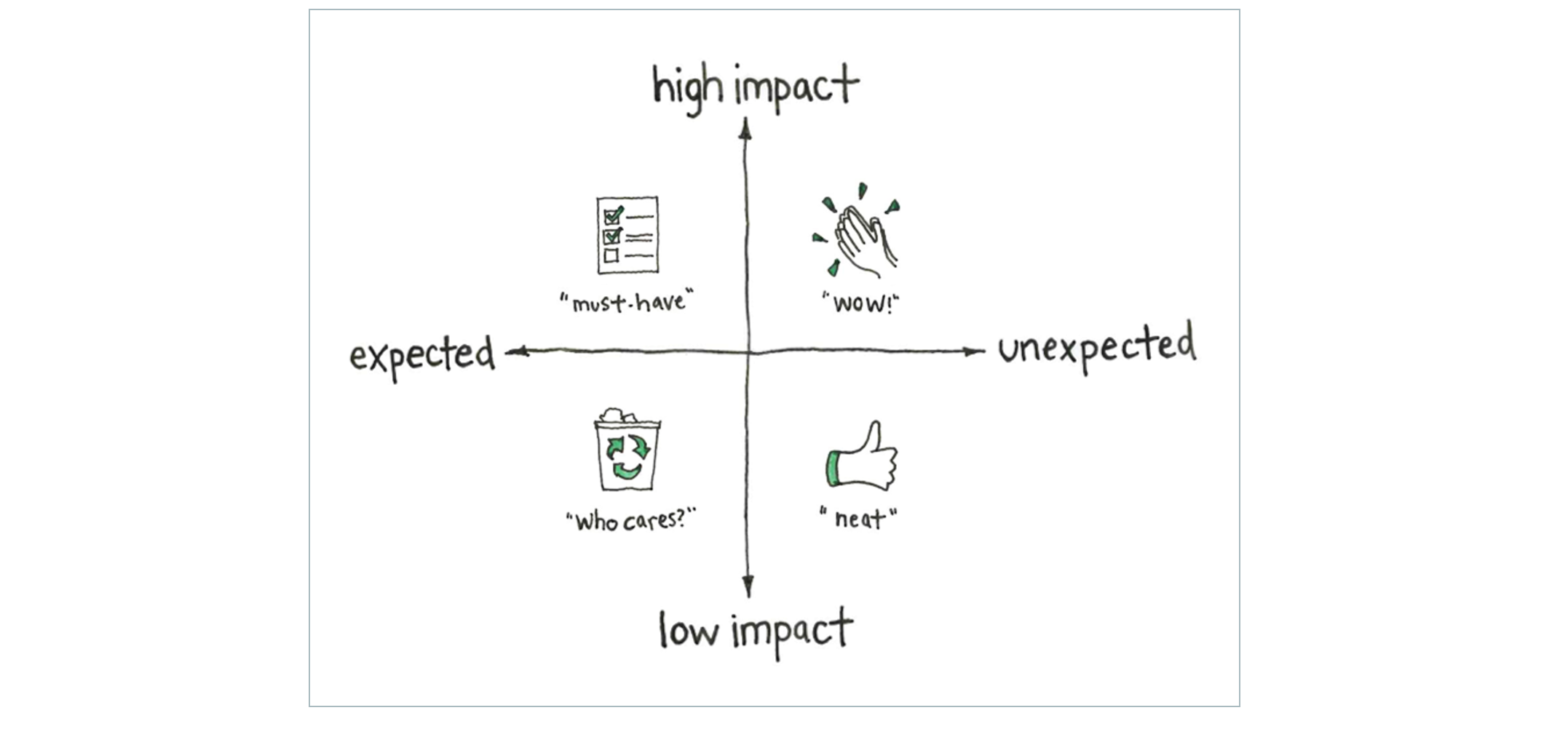
SOURCE
Every new iteration and new feature doesn’t have to be a success. What matters most is that you’re constantly finding new ways to help the user achieve their goals and want to use your products more.
Integrate with other products to drive usage
You’ll never drive the most possible usage if you’re building in a bubble. You can drive usage in your existing products and build out new products, but it’s not enough. There are always going to be other products that your users have access to. The way you’ll win is by building your product into users’ other tools so that when they’re using other products, they’re using your product, too.
Even when you’re not using Facebook in the website or the app, you’re using Facebook.
You can login to other products using Facebook:

You can share content from other websites to Facebook directly from an external site:
 You can connect your work tools to Facebook:
You can connect your work tools to Facebook: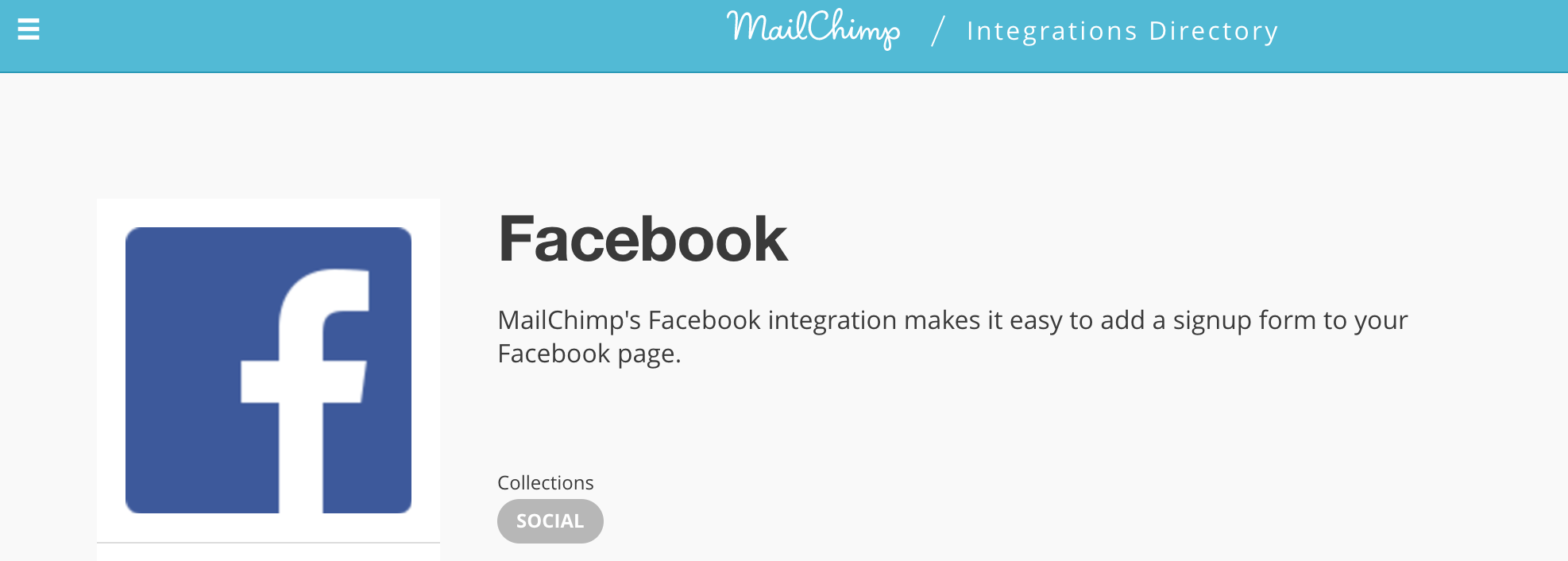
Facebook has even integrated into non app-related activities like buying show tickets through Ticketmaster:
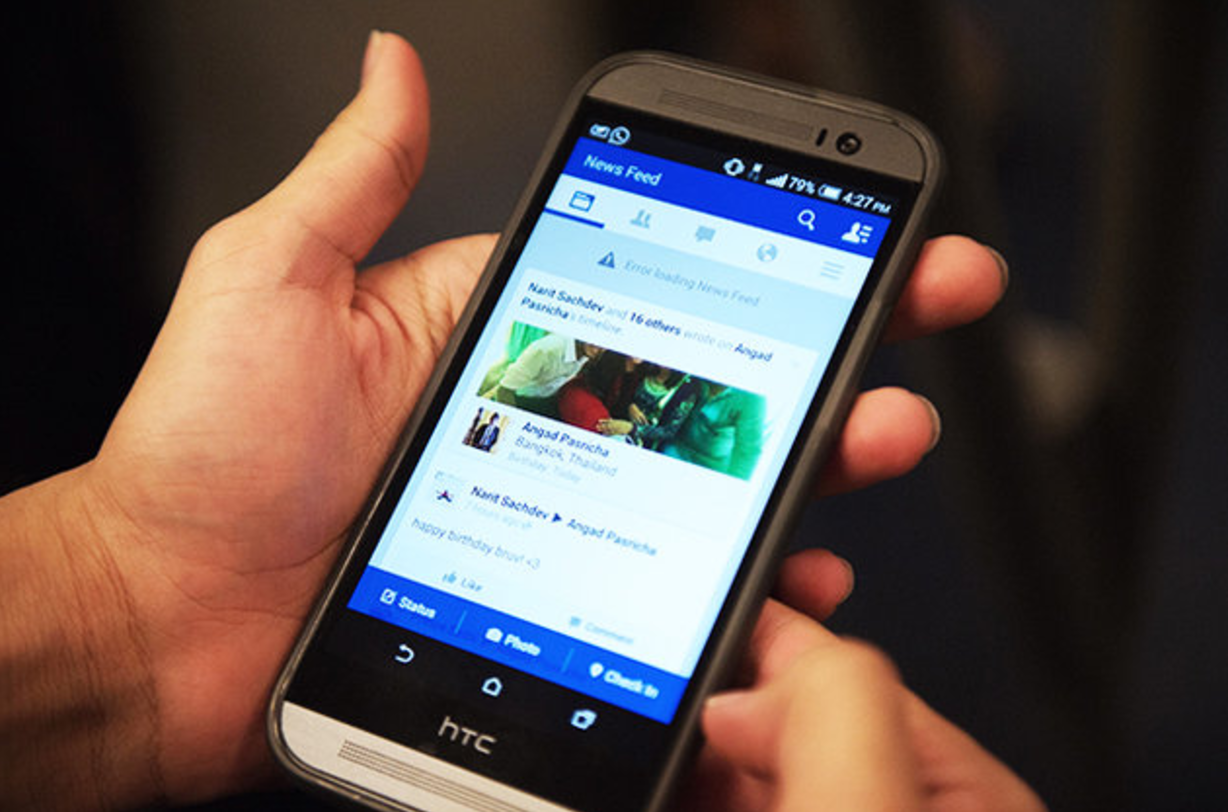
Facebook has integrated into other products so thoroughly that it’s become normal for us to see and interface with Facebook in other products. In some cases, it’s hard to even sign up for a product if you don’t already have a Facebook account.
The more integrated Facebook is with everything else, the more you use it and the more you need it. As Social + Capital partner Arjun Sethi points out:
“The behavior which the product encourages has become cultural… Facebook didn’t sit and watch other products copy its features: it made it super simple to integrate and got the lion’s share of the benefits along the way.”
This has been a deliberate part of Facebook’s growth strategy. By making it really easy—and useful—for developers to integrate their products with Facebook, people can use Facebook in so many more ways than just within the product itself.
You can integrate other tools into Slack easily
Just like Facebook built itself into all of the social and lifestyle tools their users would turn to, Slack is building itself into all of the work tools their users could want.
Integrations with mail clients like Front let you manage email directly from Slack:
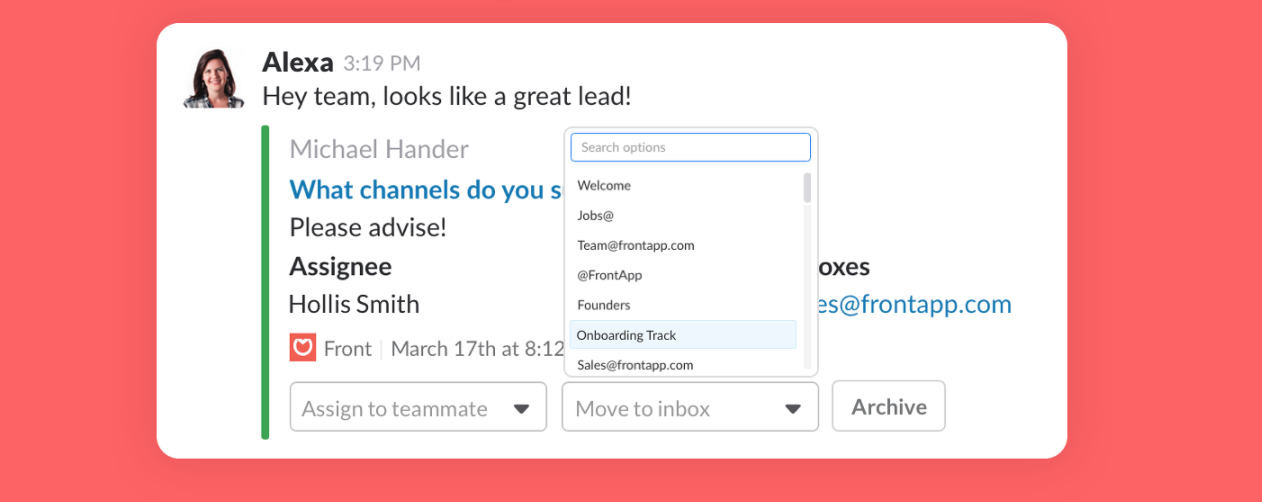
Slack integrates with Stripe so you can view and manage customer payments from within Slack:
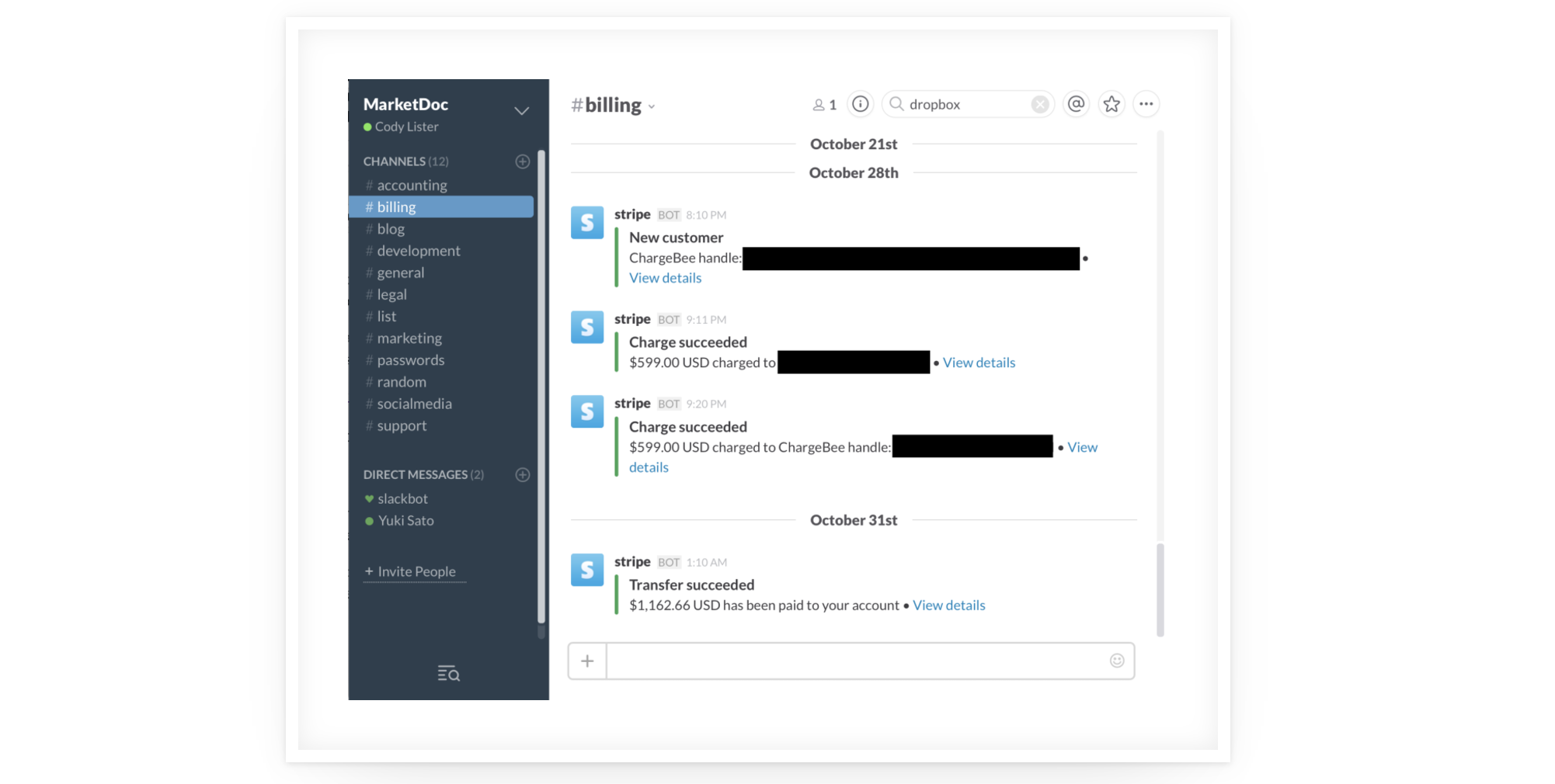
An integration with Google Docs lets you see Doc activity without leaving the Slack app:
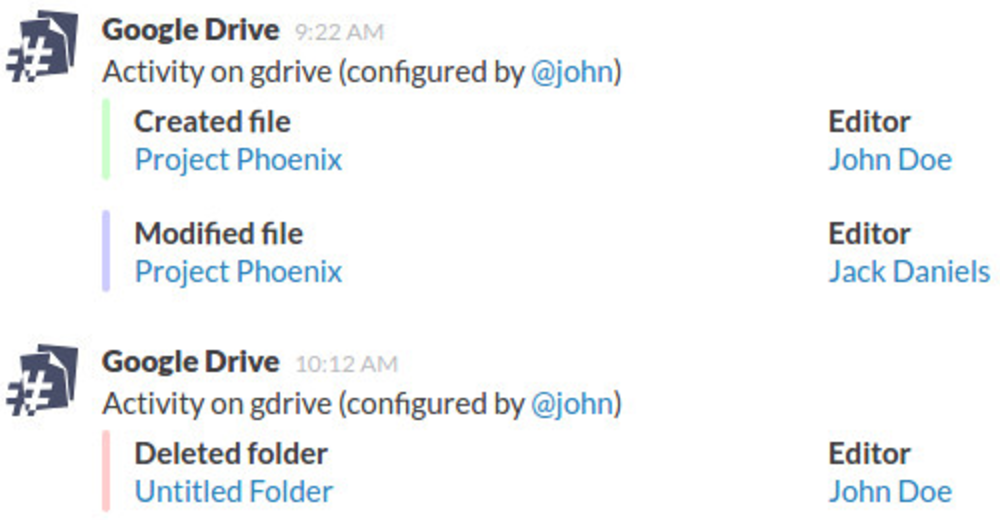
Slack has built out a huge app ecosystem that encourages third-party integrations—in 2015, they formed an $80 million venture fund exclusively for apps. In 2016, Slack had over 600 apps on its platform. So instead of going somewhere else to manage email, communicate with customers, see product analytics, et cetera, Slack users can do it all from the product they already use to talk with teammates.
Facebook and Slack are driving usage by integrating their product wherever else their users might turn. Here’s how to embed your product in the ecosystem of tech that your user already knows:
Think about your user’s workflow when using your product and extrapolate to other points in the workflow. For example, HubSpot users are ultimately trying to nurture and convert leads. So HubSpot has a CRM tool that integrates with the Facebook ad optimization tool AdEspresso so that people who click on ads are automatically uploaded to the CRM.
Integrate with popular products to leverage their scale. Integrating with high-visibility products increases your product’s visibility. You create more opportunities to put your product in front of potential users, and you transfer the brand trust of well-established products to your product. If your company is small, start with visible but accessible products like Slack and Facebook.
Use Zapier to integrate with even more products. By building your app to be able to integrate with Zapier, you give users the options to integrate with an entire ecosystem of other apps that you may not be able to directly integrate with yet. This helps users build your product into their workflow no matter how unique it is.
There’s only so much usage that you can juice if you’re just focused on one way to grow your product. If SaaS companies really want to make sure users constantly love and use their product, they have to be optimizing usage in every way they can: by driving usage within the existing product, by building out new products, and by integrating with all of the tools their users already need.
Building for the next generation of SaaS
SaaS products are more and more likely to become irrelevant and die. If companies can’t get people to genuinely love using their product, they won’t be able to grow and users will move on.
Facebook is hitting on three really simple but all-encompassing ways that a company can drive usage and growth: getting people to use the current product more, getting people to use the product in new ways by building out more products, and getting people to use the product in other tools that they use already. Growing usage is driving their success.
The most successful SaaS companies of the future will focus on usage, too. With Facebook as a model, this is how companies will build for the next generation of SaaS.
Get the best content each week for creating better products, faster.
